Search Images
Browse Content (p. 1145)
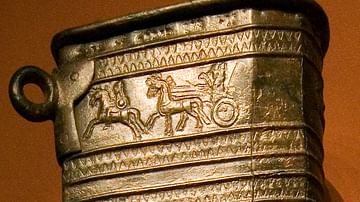
Image
Urartu Decorated Quiver
A bronze quiver of the Urartu civilization (9th-6th century BCE) from Teishebaini (Kamir-Blur, Armenia). It is inscribed with the name of King Sarduri II (r. c. 760-743 BCE). (Hermitage Museum, Saint Petersburg)
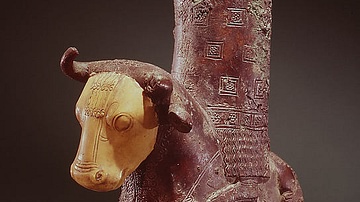
Image
Urartu Deity & Bull
A bronze sculpture, once part of a throne, depicting a deity riding a bull. Urartu civilization, 8th-7th century BCE. The bull's face is a modern restoration. Height:
14.6 cm. (Metropolitan Museum of Art, New York)
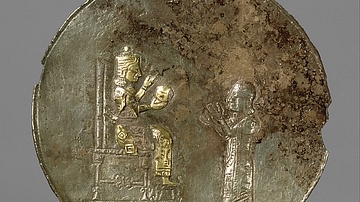
Image
Urartu God & Worshipper
A silver medallion with gold foil addition depicting a seated god and worshipper. Urartu civilization, 8th-7th century BCE. Diameter: 6 cm. (Metropolitan Museum of Art, New York)
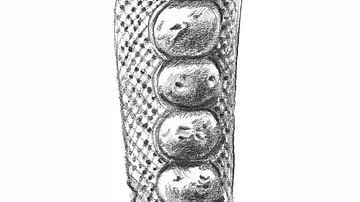
Image
Carved Globule Bones (Castelluccio Culture, Sicily)
Animal bone segments (early bronze age, c. 2169 - c. 1500 BCE), between 13-15 centimeters in length, sometimes decorated with incisions on which, successively, have been carried out globules in relief. Their uses are not yet known, although...
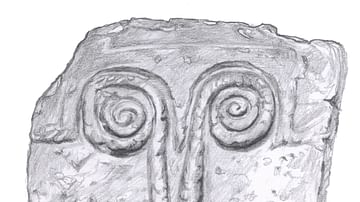
Image
Tombstone Door (Castelluccio Culture, Sicily)
Stone door (early bronze Age, c. 2169 - c. 1500 BCE) closing of a grave dug in the rock, decorated in relief with spiral shaped motifs. On it are carved images that could allude to the sexual act and, therefore, to the continuation of life...
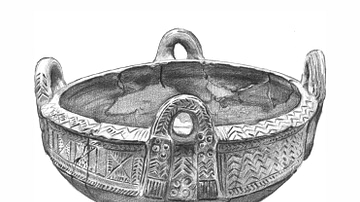
Image
Large Sicilian Bowl (Finocchito Facies, Sicily)
Four handled large bowl from Sicily (late Bronze Age, second half 8th century BCE - second half 7th century BCE) embellished with geometric patterns. The engravings consist of groups of lines, triangles with internal hatches and other inscribed...
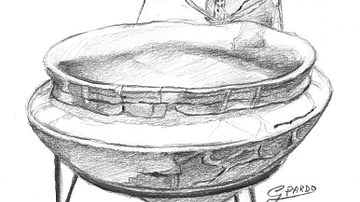
Image
Ritual Ceramic Wash Basin (Thapsos Culture, Sicily)
Large wash basin on a high foot with bifid handle (c. 1500-c. 1200 BCE), richly decorated with geometric engravings. Thapsos Culture, Sicily. (Pencil drawing by Gina Pardo).
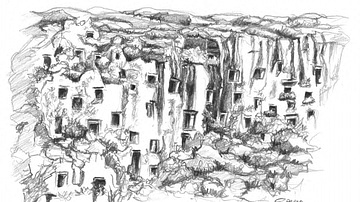
Image
Rock Necropolis of Pantalica
One of the most evocative settlements of Sicilian prehistory (c.1250 - c. 700 BCE) with thousands of excavated tombs in the steep walls of mountain chasms that overlook the valleys of the rivers Anapo and Calcinara, in the Syracuse interior...
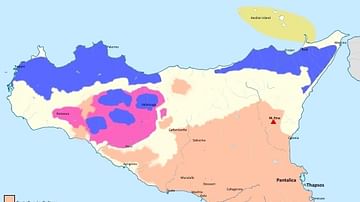
Image
Sicily in the Early Bronze Age
A map of Sicily in the early Bronze Age (2169 ±120 BCE - c.1500 BCE) divided into 4 cultural macro-regions: northern Sicily with the Rodì-Tindari-Vallelunga culture, western with the Naro/Partanna culture, the south-east with the Castelluccio...
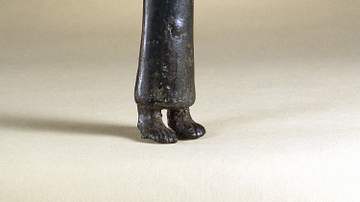
Image
Urartian Male God Figurine
A bronze standing figurine depicting a bearded god, Urartu civilization, 8th-7th century BCE. Height: 21 cm. (British Museum, London)